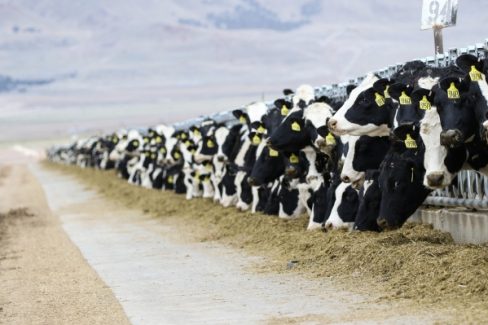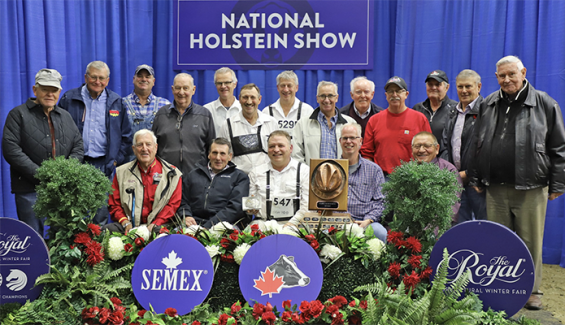The Penn State Extension Dairy Business Management Team summarizes Pennsylvania dairy cash flow plans annually to assess the factors that lead to farm profitability.
In 2015, the 105 farms in the summary were divided by farm size to determine if there are any benefits to larger-scaled farms.
The Penn State Extension Dairy Business Management Team summarizes Pennsylvania dairy cash flow plans annually to assess the factors that lead to farm profitability. In 2015, the 105 farms in the summary were divided by farm size to determine if there are any benefits to larger-scaled farms. The average farm size in Pennsylvania is 72 cows (Center for Dairy Excellence, 2012). The farms in this summary ranged from 32 cows to 1,275 cows with the average being 152 total cows.
This is a cash flow summary that helps farms determine a gross milk price breakeven for their farms. Gross milk price breakeven is the milk price needed for farms to be able to cover all of their expenses during a given year including their family living expenses and principal and interest payments. This summary is specific to the dairy enterprise for the farm and does not assess other farm enterprises such as cash crops or other farm income.
Discussion of dairy farm management often focuses on whether small farms can be profitable in today’s market. This analysis, which is representative of the Pennsylvania dairy industry, shows similarity between each group of farms from smallest to largest. The highest breakeven gross milk price was recorded for the average sized farm between 105 and 176 cows at $21.20/cwt. However, this is only 10% higher than the lowest farm size group: the 52- to 70-cow farms.
While this analysis shows that there is no major difference between small farms and large farms in the breakeven milk price needed, certain variables do show a variation between these groups:
- Larger farms projected they would ship 16% more milk per cow in 2015 than the smaller farms. This leads to 12% more income from the dairy enterprise for these larger farms.
- Often, the largest disparity between profitable and unprofitable farms is the cost of feed. Penn State Extension Dairy Business Educator, Tim Beck, discussed this and other factors in the February 18, 2016 edition of the Dairy Digest (Beck, 2016). However, when comparing breakeven milk price by farm size, the difference in total feed costs (both home-raised and purchased feeds) is only 11%. Furthermore, large and small farms alike spend on average 44% of their milk income on feed.
- While the difference is not substantial from the small farms to larger farms, the projected milk sold per cow per year is higher for farms over 180 cows, which may be attributed to the need to cover higher overhead expenses.
- The largest farms spent 109% more on overhead expenses than the smaller farms. Overhead expenses include hired labor, which showed the largest discrepancy between large and small farms. Larger farms spent 1,151% more on hired labor than the smallest farms.
- One area that does balance the hired labor expense is the owner draw category, which shows that smaller farms tend to take a higher owner draw per cow than the larger farms. The farms in the summary report these two categories as the actual expenses they expect for hired labor and owner draw for the year. Depending on the business structure of the farm, owners and managers may pay themselves a salary rather than take an owner draw. Additionally, smaller farms are more likely to use family labor rather than hire outside employees.
- One distinction that may be more specific to Pennsylvania is the variation between fuel and oil expenses versus utilities. This summary contains many farms that do not connect to utility poles and the electrical grid. Therefore, these smaller farms use more fuel and oil to run diesel powered generators rather than electricity as on larger farms.
- Finally, the cash flow plan includes total loan payments (principal and interest) as this is one major portion of the cash outflows from the farm business. Nine of the 105 farms in the summary showed no loan payments. The remaining farms ranged from $100 to over $1,200 per cow per year. The average farm in the summary showed total loan payments of $479 per cow per year.
The cash flow plan can be considered much like a checkbook; the plan helps determine all the sources of cash inflows and outflows expected for the year. Therefore, these plans to not include inventory adjustments and other assets that would become part of a larger income statement that is another aspect of farm financial analysis. This is particularly important to remember as related to other indicators of farm profitability. For example, loan payments per cow considers the cash that is needed to be able to cover these payments, while a similar measure, debt per cow, indicates the total debt load on a farm business compared to farm size.
Therefore, while the cash flow plan is only one part of a broader farm profitability profile, this summary helps to show that there are no inherent guarantees for greater profitability based on farm size. While it does appear that large farms have overall higher expenses and therefore require more milk and income per cow to cover these costs, farms of all sizes show similar milk price breakeven values. The average gross milk price breakeven for the entire summary for 2015 was $19.88/cwt. The PA gross milk price in 2015 averaged $18.46/cwt, indicating that the average farm in this summary was projected to lose over $1.42/cwt over the course of the year. While farms of all sizes show similar cash inflows, dairy expenses, and total outflows, each dairy farm business must know what its gross milk price breakeven needs to be to achieve a positive cash balance for the year.
Click HERE for more information.
Source – Farms.com




